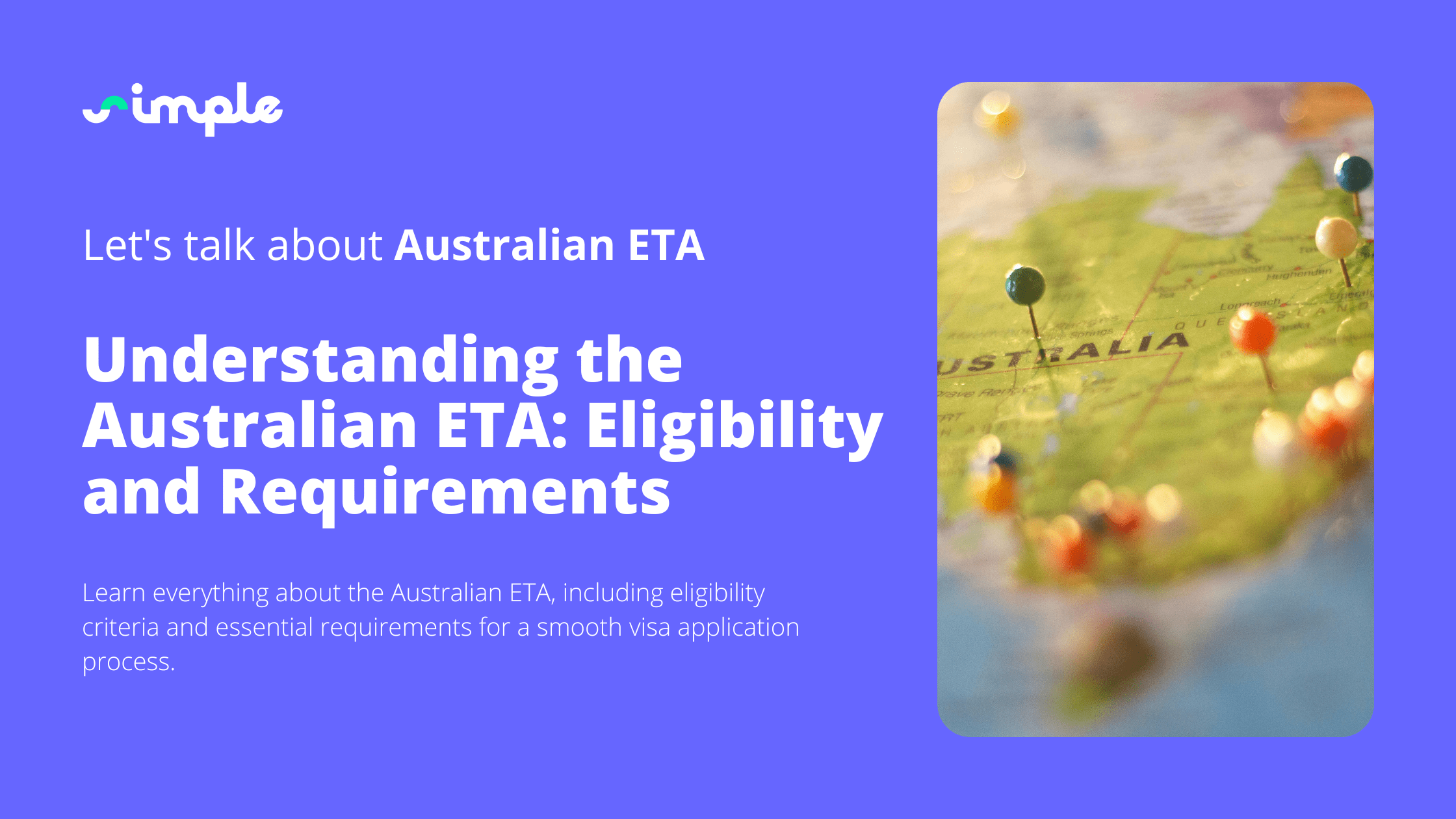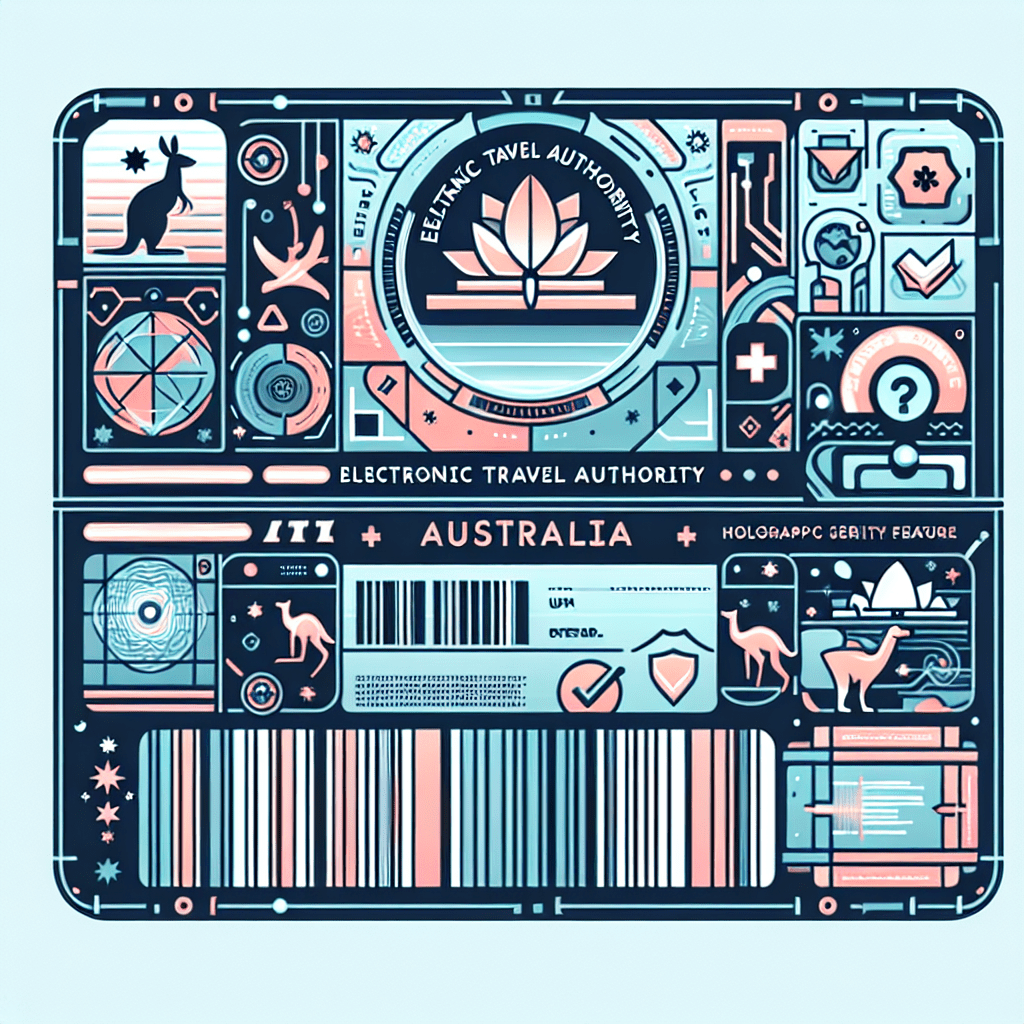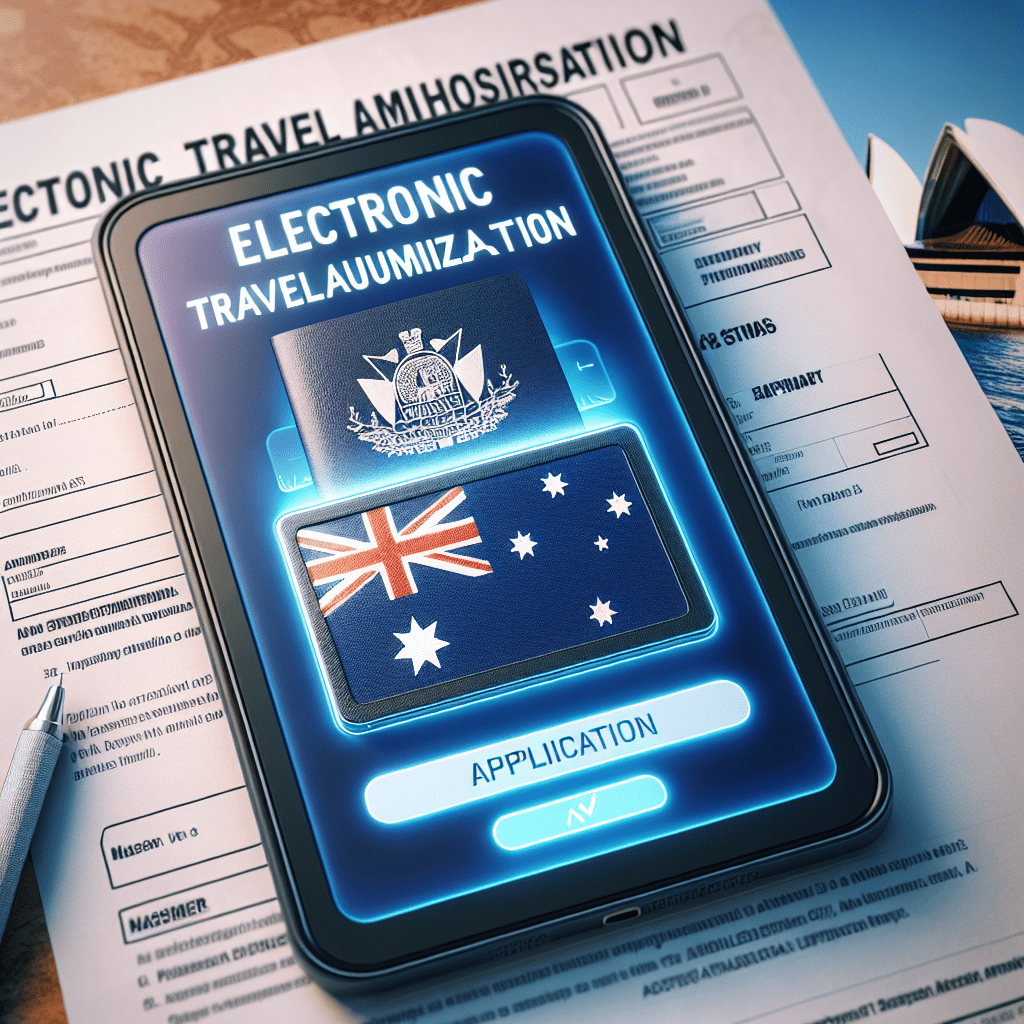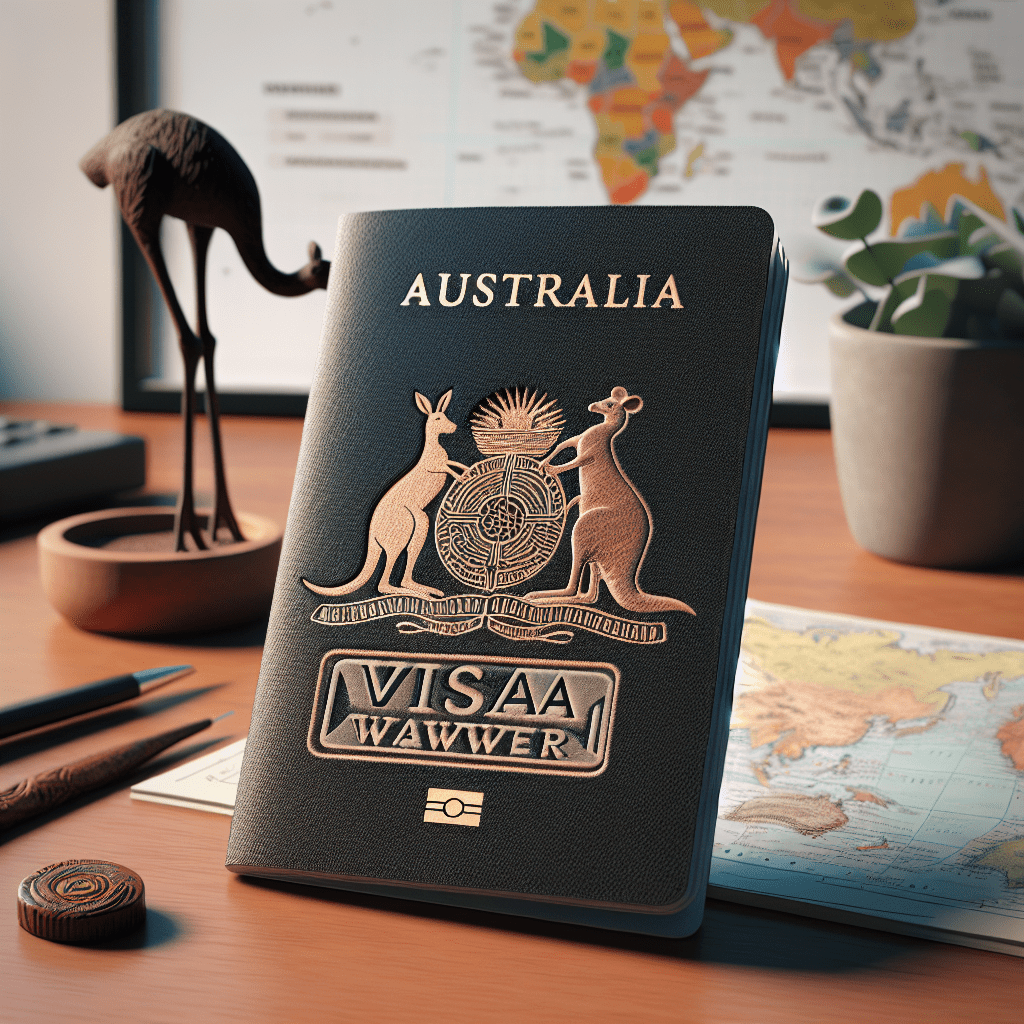Understanding the Australian ETA: Eligibility and Requirements

The Australian ETA (Electronic Travel Authorization) represents a streamlined and efficient way for eligible travelers to gain entry into Australia without the need for a traditional visa. Designed to simplify the process for short-term visits, the ETA allows tourists, business visitors, and transit passengers to obtain travel authorization quickly and conveniently through an online system. This electronic travel authorization eliminates the need for physical paperwork and lengthy embassy visits, making it an attractive option for many international travelers planning to visit Australia.
Understanding the eligibility criteria for the Australian ETA is crucial to ensure a smooth application process and avoid unnecessary delays or complications. Not all travelers qualify for this electronic visa waiver, and knowing the specific requirements helps applicants determine whether they should apply for an ETA or pursue an alternative visa type. Factors such as nationality, purpose of visit, and travel history play a significant role in determining eligibility. Additionally, the Australian ETA is distinct from other travel permits like the eVisitor visa, which has its own set of rules and eligible countries.
Clarifying the key requirements for the Australian ETA empowers prospective travelers to prepare their applications accurately and confidently. This includes understanding the necessary documentation, the application procedure, and the conditions attached to the ETA, such as the permitted length of stay and activities allowed during the visit. Being well-informed about these aspects reduces the risk of application rejection and ensures compliance with Australia’s entry regulations.
For those seeking detailed guidance on the Australian ETA, resources like Australian ETA provide comprehensive information and support throughout the application process. Whether planning a short holiday, attending business meetings, or transiting through Australia, knowing the ins and outs of the ETA system is essential for a hassle-free travel experience. This knowledge not only saves time but also enhances the overall journey by minimizing uncertainties related to travel authorization.

What is the Australian ETA?
Definition and purpose
The Australian ETA, or Electronic Travel Authority, is a digital travel authorization designed to simplify the entry process for eligible visitors traveling to Australia for short-term stays. Unlike traditional visas that often require physical paperwork, in-person appointments, or visits to consulates, the ETA is an electronically stored authority linked directly to the traveler’s passport. This system allows eligible travelers to obtain permission to enter Australia quickly and efficiently, making it an essential tool for tourism, business visits, and transit purposes.
At its core, the Australia electronic travel authorization serves as a streamlined alternative to more complex visa categories. It is specifically intended to facilitate short-term travel, typically for tourism or business activities such as attending conferences, meetings, or exploratory business visits. The ETA is not designed for long-term stays, work, or study purposes, which require different visa types. By offering a simplified application process, the Australian ETA reduces administrative burdens for both travelers and immigration authorities, ensuring smoother border control operations.
When compared to other Australian visa types, the ETA stands out for its convenience and speed. For example, the Australian eVisitor visa, which is similar in function, is available to European Union passport holders and also allows short-term visits. However, the ETA covers a broader range of nationalities, including citizens from the United States, Canada, Japan, and several other countries. Unlike the traditional visitor visa, which may require extensive documentation and longer processing times, the ETA can often be approved within minutes or hours, provided the application is complete and accurate.
Validity and duration of stay
The Australian ETA typically has a validity period of 12 months from the date of issue. During this time, travelers can enter Australia multiple times without needing to reapply for a new travel authorization. This multiple-entry feature is particularly beneficial for business travelers or tourists who plan to visit Australia more than once within a year.
While the ETA itself remains valid for up to one year, the permitted duration of each individual visit is generally limited to a maximum of three months (90 days). This means that upon each entry, travelers can stay in Australia for up to three months, after which they must depart the country. It is important to note that the three-month stay is cumulative per visit and cannot be extended under the ETA conditions. Travelers seeking longer stays must apply for a different visa category that accommodates extended visits.
Conditions regarding multiple entries are straightforward: as long as the ETA is valid, travelers can enter and exit Australia multiple times within the 12-month period. However, each visit must comply with the maximum stay limit. Immigration officers at the border have the authority to assess the purpose and frequency of visits to ensure compliance with Australia’s entry requirements. Frequent or prolonged stays may raise questions about the traveler’s intentions and could lead to additional scrutiny or visa refusal in the future.
Application process basics
The application process for the Australian ETA is designed to be user-friendly and accessible through an online platform. Applicants can complete the Australia online visa application from anywhere in the world, using a computer or mobile device. The official channels for submitting an ETA application include the Australian Government’s Department of Home Affairs website and authorized third-party service providers. It is essential to use only official or reputable sources to avoid scams or additional fees.
One of the key advantages of the ETA application system is its rapid processing time. In many cases, applicants receive approval within minutes of submitting their information, although some applications may require additional verification, which can extend the processing time. On average, the Australia ETA processing time ranges from immediate approval to a few days, depending on the applicant’s circumstances and the accuracy of the submitted information.
Applicants must pay a nominal service fee when applying for the ETA, which covers the administrative costs of processing the travel authorization. This fee is non-refundable, even if the application is denied. Therefore, it is crucial to ensure that all documentation and information provided are accurate and complete. Common requirements include a valid passport from an eligible country, personal identification details, and answers to health and character questions. Any discrepancies or errors in the application can lead to delays or rejection.
Maintaining accuracy throughout the application process is vital. Since the ETA is electronically linked to the traveler’s passport, any changes to passport details after approval may require a new application. Additionally, travelers should verify that their passport remains valid for the entire duration of their intended stay in Australia, as expired or soon-to-expire passports can invalidate the ETA.
In summary, the Australian ETA offers a convenient and efficient way for eligible travelers to obtain short-term travel authorization. Its electronic format, multiple-entry validity, and relatively quick processing times make it a preferred choice for many visitors. Understanding the definition, purpose, validity, and application process of the ETA is essential for anyone planning to visit Australia under this travel permit.

Eligibility Requirements for the Australian ETA
Eligible nationalities and passport holders
The Australian ETA is available exclusively to citizens of certain countries, reflecting Australia’s selective approach to managing its borders while facilitating travel from trusted nations. The list of eligible nationalities includes countries such as the United States, Canada, Japan, South Korea, Singapore, and several others primarily from North America, Asia, and parts of Europe. This selective eligibility is designed to streamline entry for travelers from countries with strong diplomatic ties and low immigration risk profiles.
Applicants must hold a valid passport from one of these eligible countries to apply for the ETA. The passport must be an electronic passport with a digital chip containing biometric information, which enhances security and verification processes at Australian border controls. Additionally, the passport should remain valid for the entire duration of the intended stay in Australia. If the passport expires before or during the visit, the ETA will no longer be valid, and travelers will need to apply for a new authorization with a valid passport.
Restrictions apply to applicants who have previously experienced visa refusals, cancellations, or breaches of Australian immigration laws. Individuals with a history of visa violations or criminal convictions may be deemed ineligible for the Australian visa waiver program, including the ETA. In such cases, applicants are often required to apply for a different visa type that involves a more thorough assessment process. This ensures that Australia maintains strict control over who is permitted entry, protecting its borders and upholding immigration integrity.
Purpose of visit criteria
The Australian ETA is specifically designed for short-term visits related to tourism, business, or transit. Eligible activities under this travel authorization include sightseeing, visiting family or friends, attending conferences or business meetings, and participating in non-paid business activities such as negotiations or exploratory visits. The ETA does not permit employment, long-term study, or any form of paid work, which require separate visa categories with more stringent requirements.
Tourists using the Australian tourist ETA can enjoy the country’s diverse attractions, from iconic landmarks like the Sydney Opera House to natural wonders such as the Great Barrier Reef. Business visitors benefit from the ability to attend meetings or conferences without the need for a more complex visa application. However, it is important to note that the ETA explicitly prohibits activities such as paid employment, permanent residency applications, or engaging in any form of work that generates income within Australia.
The duration of stay under the ETA is limited to a maximum of three months per visit, aligning with the purpose of short-term tourism or business. This limitation ensures that the ETA remains a short stay visa option and prevents misuse for extended residency or unauthorized work. Travelers planning longer stays or different activities must seek appropriate visas that match their intentions and comply with Australia’s immigration laws.
Health, character, and security checks
Applicants for the Australian ETA must meet basic health requirements to ensure they do not pose a public health risk to the Australian community. While the ETA application process does not require extensive medical examinations, travelers must declare any serious health conditions or communicable diseases. In some cases, additional health assessments may be requested if there are concerns about the applicant’s health status. This helps Australia maintain a safe environment for both residents and visitors.
Character assessments are a critical component of the ETA eligibility process. Applicants must disclose any criminal history, including convictions or pending charges. Those with significant criminal records may be denied the ETA and required to apply for a different visa that involves a more detailed character assessment. This policy helps protect Australia’s security and public safety by preventing entry to individuals who may pose a risk.
Security protocols associated with the ETA include background checks against international databases and watchlists. These checks are designed to identify individuals involved in activities such as terrorism, espionage, or other threats to national security. The Australia travel authorization system integrates these security measures seamlessly into the online application process, ensuring that only low-risk travelers are granted entry under the ETA program.
In summary, the eligibility requirements for the Australian ETA encompass nationality, passport validity, purpose of visit, and health and character considerations. Meeting these criteria is essential for a successful ETA application and a smooth entry into Australia. Understanding these requirements helps travelers prepare adequately and avoid complications during their journey.

Key Considerations and Tips for Successful ETA Application
Avoiding common application mistakes
Submitting a successful ETA application requires careful attention to detail to avoid common pitfalls that can lead to delays or refusals. One of the most frequent mistakes is providing incomplete or inaccurate information. Since the Australian ETA is an electronic travel authorization linked directly to the applicant’s passport, any discrepancies in personal details such as name spelling, date of birth, or passport number can cause processing issues. Ensuring that all fields in the Australia online visa application are filled out correctly and thoroughly is essential for a smooth approval process.
Another critical aspect is verifying passport details before submission. The passport must be valid for the entire duration of the intended stay in Australia, and the information entered in the ETA application must match the passport exactly. Even minor errors, such as transposed numbers or incorrect expiration dates, can result in the application being rejected or delayed. Travelers should double-check their passport information and keep their passport handy while completing the application to avoid mistakes.
Adhering to the official guidelines provided by the Australian Government is also vital. Using only authorized channels for the ETA application helps prevent scams and ensures that applicants pay the correct fees. Many third-party websites offer ETA application services, but some may charge excessive fees or provide inaccurate information. Applying through the official Department of Home Affairs website or trusted partners guarantees that the application is processed correctly and securely.
Additionally, applicants should be honest and transparent when answering health and character questions. Providing false or misleading information can lead to visa refusal and potential bans on future travel to Australia. Being upfront about any past visa refusals, criminal records, or health issues allows immigration authorities to assess the application fairly and reduces the risk of complications at the border.
When to apply and managing timing
Timing plays a crucial role in the ETA application process. Although the Australia ETA processing time is often very fast—sometimes within minutes—applicants are advised to apply well in advance of their intended travel date. Applying at least a few weeks before departure provides a buffer in case additional documentation or verification is required. This proactive approach helps avoid last-minute stress and potential disruptions to travel plans.
Understanding the typical processing times for the ETA is important for effective planning. While many applicants receive instant approval, some applications may be subject to further review, which can extend the processing time to several days. Factors influencing processing times include the applicant’s nationality, travel history, and the completeness of the application. Monitoring the status of the ETA application through official channels can provide reassurance and allow travelers to make informed decisions.
Last-minute applications carry inherent risks. Submitting an ETA application just before departure may result in insufficient time to resolve any issues or provide additional information if requested by immigration authorities. In such cases, travelers might face denied boarding or entry, leading to costly cancellations or rescheduling. To mitigate these risks, it is best to complete the Australia online visa application as early as possible, ideally soon after travel plans are confirmed.
Post-approval and entry into Australia
Once the ETA application is approved, applicants receive electronic confirmation that their Australia travel authorization is linked to their passport. It is important to understand that the ETA itself is not a physical document but an electronic record accessible to Australian border officials. Travelers should keep a copy of the approval confirmation for their records, although presenting the passport with the linked ETA is sufficient at the border.
Upon arrival in Australia, travelers must present their valid passport to immigration officers. The Australian tourist ETA allows entry under the conditions specified during the application, including the permitted duration of stay and the purpose of the visit. Border officials have the authority to verify the traveler’s intentions and may ask questions related to the visit. Compliance with Australia entry requirements is essential to avoid complications or denial of entry.
It is important to note that having an approved ETA does not guarantee entry into Australia. Immigration officers retain the discretion to refuse entry if they believe the traveler does not meet the entry criteria or poses a risk to the country. Reasons for refusal at the border may include suspicion of unauthorized work, failure to demonstrate sufficient funds, or concerns related to health or character. Travelers should be prepared to answer questions honestly and provide supporting documentation if requested.
In conclusion, careful attention to application details, timely submission, and understanding post-approval procedures are key to a successful Australian ETA experience. By following these guidelines, travelers can minimize risks and enjoy the benefits of this convenient Australia electronic visa option for short-term visits.

Final Thoughts on the Australian ETA Eligibility and Requirements
Understanding who qualifies for the Australian ETA and the essential requirements involved is fundamental for anyone planning a short-term visit to Australia. The ETA is designed to facilitate travel for citizens of select countries, offering a convenient and efficient alternative to traditional visa processes. Eligibility hinges on factors such as nationality, passport validity, purpose of visit, and compliance with health and character standards. Recognizing these criteria helps applicants determine whether the ETA is the appropriate travel authorization or if another visa type is necessary. This clarity reduces the risk of application errors, delays, or refusals, ensuring that travelers meet Australia’s entry requirements and enjoy a seamless arrival experience.
The Australian ETA serves as a practical solution for tourists, business visitors, and transit passengers seeking short stays of up to three months. Its electronic format and multiple-entry validity within a 12-month period provide flexibility and ease of use. However, the ETA is not suitable for long-term stays, employment, or study, which require different visa categories. By clearly understanding these boundaries, travelers can avoid misunderstandings and ensure their visit aligns with the conditions of the ETA. This knowledge also supports compliance with Australian immigration laws, safeguarding future travel opportunities.
Thorough preparation and early application are key to a successful ETA process and smooth travel plans. Completing the Australia online visa application with accurate and complete information minimizes the chance of processing delays or rejections. Checking passport details carefully and adhering to official guidelines further strengthens the application’s validity. Applying well in advance of the intended travel date allows sufficient time to address any additional requirements or unexpected issues that may arise during processing. This proactive approach helps travelers avoid last-minute complications that could disrupt their itinerary.
Ultimately, the Australian ETA offers a streamlined and accessible pathway for eligible travelers to experience Australia’s unique attractions and business opportunities. By investing time in understanding eligibility and requirements, and by managing the application process diligently, visitors can confidently secure their travel authorization. This preparation not only facilitates entry but also contributes to a positive and hassle-free journey, allowing travelers to focus on the enriching experiences that Australia has to offer.